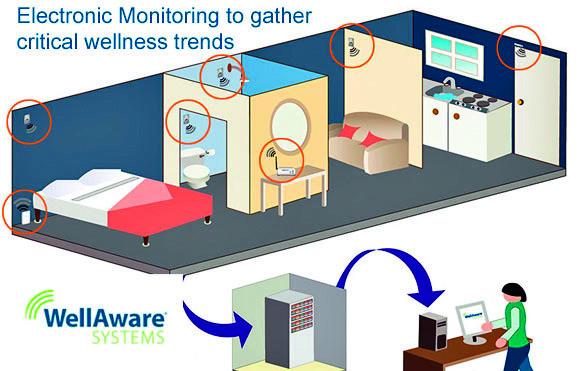Tech for Life

But for some people, technology is less about movies and music and more a powerful tool allowing them to continue living life on their terms. Whether due to physical disabilities or advancing years, many families now utilize technology to help relatives “age in place,” a term defined by the Centers for Disease Control as “the ability to live in one’s own home and community safely, independently, and comfortably, regardless of age, income, or ability level.” And we’re talking tech far beyond the, “I’ve fallen and I can’t get up!” lady.
While home automation systems have evolved and advanced, they have also become less expensive, making these applications attainable for more people. Couple this with ubiquitous high-speed Internet connections and readily available smart devices like phones and tablets, and new lifestyle possibilities are open that would have been impossible or cost prohibitive just a few years ago.
A main processor from the likes of Control4, Crestron, Elan, Savant, or Leviton acts as the brains of the system and handles the advanced “if this, then this, else this” macro programming and remote access and notifications. These processors also feature an astronomic time clock that automatically adjusts to changing sunrise and sunset times and incorporates programmed time events, such as turning exterior lights on at dusk, or activating a “night scene” at 11 p.m.
While the processor handles the system’s heavy lifting, it is a battery of sensors located around the home that gives it its true power and flexibility. With a variety of different monitors like door contacts and motion, pressure, and temperature sensors, there’s an almost endless array of options to provide a caretaker with peace of mind and let remote family members know their loved ones are doing well, while allowing the relative their independence and ability to remain in their home.
While automation applications are limited only by your imagination, here are a few common uses for aging-in-place applications:
- Pressure sensors in a mattress could send an e-mail or text if a loved one hasn’t gotten into bed by a certain time. Or a notification could be sent if someone hasn’t gotten out of bed, alerting someone to call and make sure everything is OK.
- Motion sensors can monitor to ensure that a loved one is moving around and can also be used to turn lights on and off as someone enters or leaves a room.
- Verbal announcements can play over speakers throughout the home reminding someone to take medications at specific times of the day.
- Door sensors can send an alert if someone hasn’t opened the refrigerator or pantry for several hours, or to notify if a door has been left open.
- Smart door locks can be used to allow access by a neighbor, and individual PIN codes or Bluetooth “keys” can notify you who came into the home and when they left.
- Temperature sensors can detect abnormal changes such as if an oven was left on or if a thermostat was set too high or low.
- Voice control technologies can also make life easier for those with physical or visual impairments. For example, VoicePod, available as an add-on for a variety of control systems, allows people to execute a huge array of commands by speaking to an iOS or Android device, or a dedicated in-room speaker/microphone. Commands like, “Turn bedroom room lights on” or “Set house to night mode” can execute a programmed event. Another standalone option is Honeywell’s RTH9590WF, a smart talking thermostat controlled via voice that provides verbal feedback.
Thanks to Ric Johnson, Chief Residential Designer, Right at Home Technologies.
- Log in or register to post comments






























































